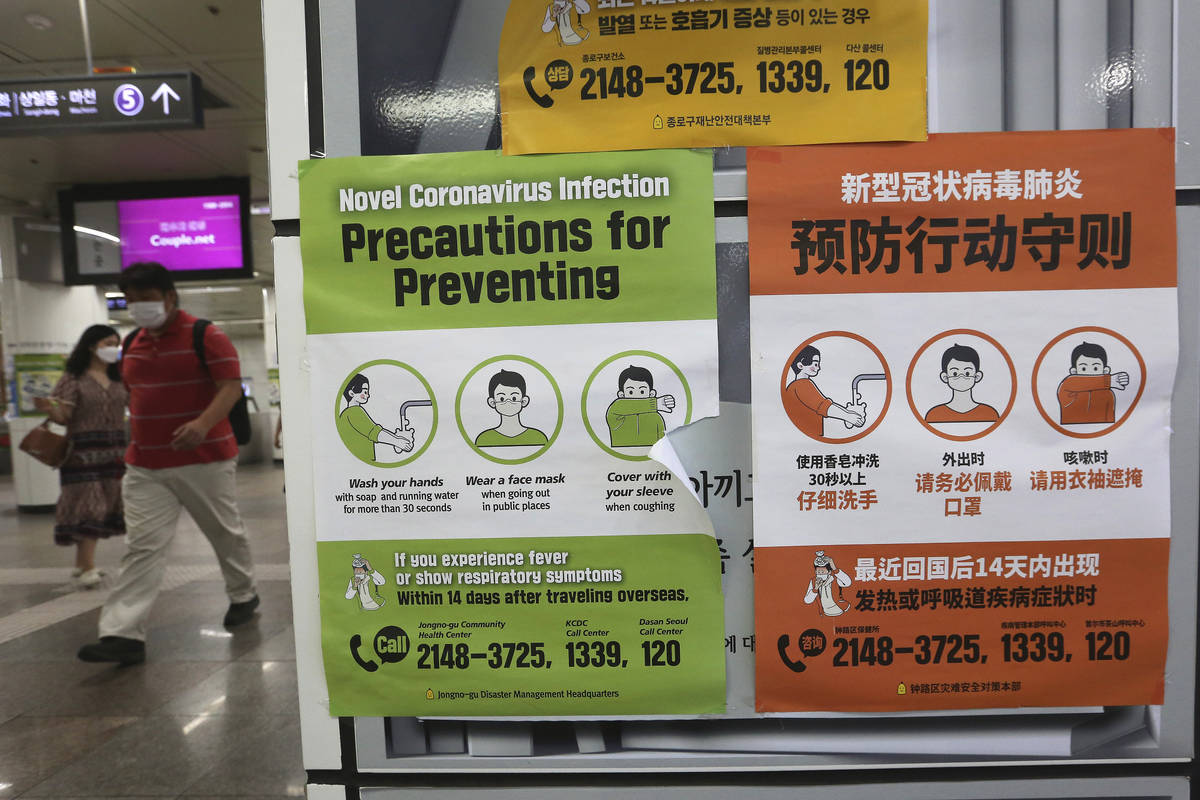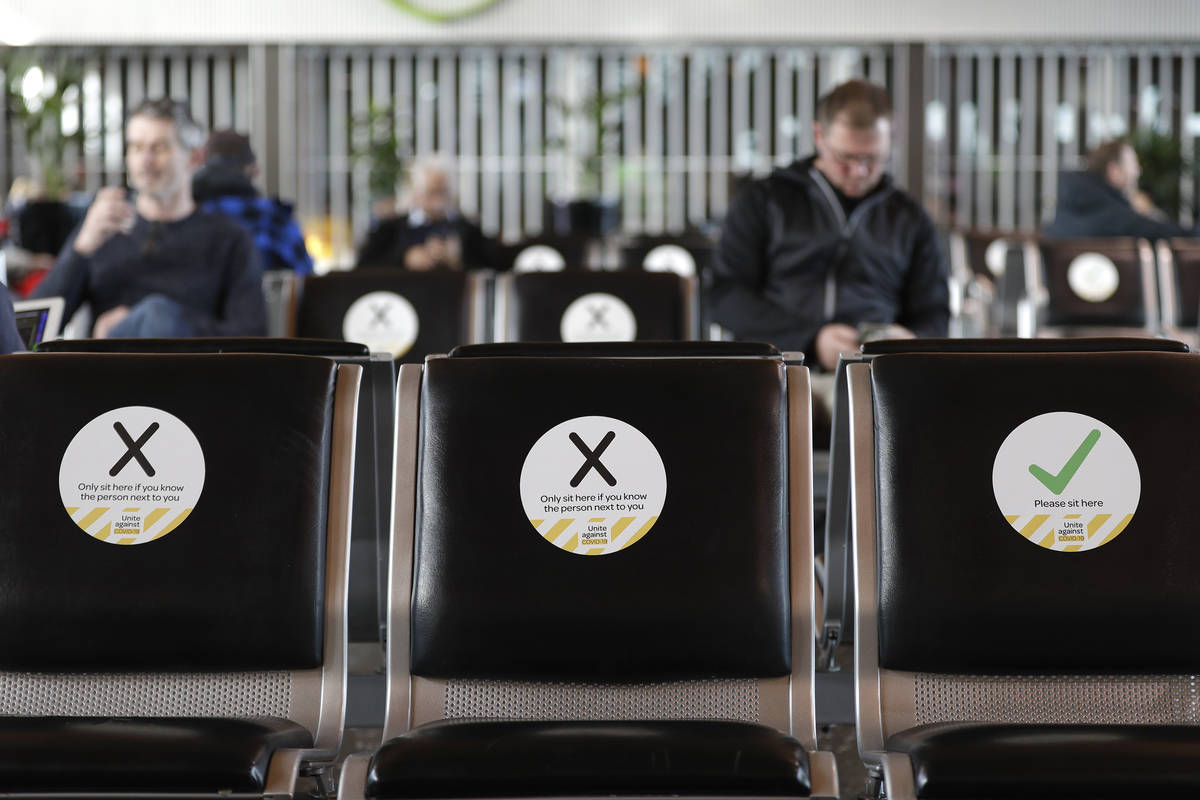Coronavirus managed best by following basics, expert advice
How do you manage a raging pandemic?
It sounds like a frightening riddle for the coronavirus age. But the answer — by following basic measures patiently and consistently for as long it takes — is something some countries have figured out and others, including the U.S., still are struggling with.
Nevada experts say countries that so far have been most successful in managing the pandemic have no special technique or magic fix. Rather, they say, the countries have successfully enacted such now-familiar measures as testing and persuading citizens to stay at home and wear masks in public.
The countries whose numbers of cases, deaths and hospitalizations are moving in the right direction “have managed to have a first big wave and then got it under control,” said Brian Labus, an assistant professor in UNLV’s School of Public Health and a member of the Nevada governor’s coronavirus task force.
New Zealand, for example, has effectively halted community transmission of the virus. “It’s still in the community,” Labus said, “but they’re able to get back to their normal lives.”
In contrast, the U.S. “started to get it under control” but saw spikes after what now seems to be too early reopenings in its worst-hit states, said Labus, who is also former epidemiologist for the Southern Nevada Health District.
The bottom line, Labus said: “Compared to the rest of the world, we’re not handling this well.”
Differing cultures
Comparing countries head to head is tricky because they vary so widely in population size, cultures and political systems.
“We’re different in America,” said Dr. Fadi El-Salibi, a Las Vegas infectious disease specialist. “We’re a much bigger country. We have a lot of mobility here.”
“You’re comparing a U.S. population of 330 million with countries that have (health) systems for 5 to 8 million,” said Dr. Wolfgang Gilliar, dean of Touro University Nevada College of Osteopathic Medicine.
Labus said, too, that public health in the U.S. primarily is carried out at the state and local levels. “So we do not have a federal mandate to say, ‘Everybody must do this in this way.’ Every state basically does its own thing. That gives us 50 chances to get it right, but also 50 chances to get it wrong, and disease doesn’t care about borders.”
Familiar measures
But, with caveats noted, experts said the countries that have seen the most success in managing the pandemic have relied on widespread testing and contact tracing to identify cases and isolate and treat carriers, ordering or encouraging the wearing of face masks to minimize person-to-person transmission, and enacting quarantines, travel restrictions and bans on public gatherings to stanch the virus’ spread.
Such measures also have been used in the U.S., but not consistently. For example, better-performing countries “did a lot of testing,” sometimes doing tens of thousands tests a day while “we were testing a thousand a day,” said Dr. Karen Duus, an associate professor of microbiology and immunology at Touro University Nevada College of Osteopathic Medicine.
According to Labus, in New Zealand and other countries seeing improvement, “they took it seriously and kept taking it seriously until it was over.”
The benefit of experience
Some better-performing countries did benefit from having had previous pandemic experience. El-Salibi said some Asian countries previously had battled SARS and MERS epidemics.
When this pandemic arrived, “they had an infrastructure that allowed them them (to work) very quickly.”
In addition, “they usually had a unified level of response (of) government,” El-Salibi said. “They all acted as a unit to prevent this because they had drilled before. I’m not saying we didn’t do that here,” he said, but “we haven’t encountered something that contagious.”
Buying in
Another hallmark of many better-performing countries is a high level of public buy-in to pandemic management measures. Whether in Iceland, New Zealand or Taiwan, citizens wore masks, stayed at home and followed public health measures requested of them.
“You got a vast amount of people who had buy-in. That’s something we didn’t get here,” Duus said. “You had buy-in among some populations and not others, and that can have something to do with the messaging (from political leaders) being inconsistent.”
In such countries as Taiwan, China and South Korea, cultural norms also made it easier to hew to public health measures. Dr. Trudy Larson, dean of the University of Nevada, Reno’s School of Community Health Sciences and a member of the governor’s coronavirus task force, said mask-wearing is common in those countries, and people’s previous experience with SARS, MERS and influenza previously underscored their value.
Here, “I think it’s taken the general public a little bit of time to accept the idea of wearing a face covering in public,” said Dr. Michael Johnson, director of community health for the Southern Nevada Health District.
“In Asia, even pre-COVID-19, you see it all the time in China and other places because of poor air quality. That’s not the case, with a few exceptions, in the United States. That has just taken time and will continue taking time.”
Labus said some countries with better numbers than the U.S. even “put in more restrictive” measures and people followed them. In the United States, there often is citizen pushback “anytime there is government intervention in anything. It’s just the political system in the United States. Our whole country was founded on the idea, ‘You can’t tell me what to do.’ That’s carried out in the way we approach everything.”
An additional strategy
On the upside, we know more about the coronavirus than we did a few months ago, Johnson said, and techniques and strategies for managing it will continue to evolve.
“I think a lot of countries have taken different approaches,” Johnson said. “I think a lot of lessons learned so far have really been about avoiding mistakes or challenges other countries might have made.”
El-Salibi said an effective pandemic-managing technique here might be recasting the coronavirus as a “common enemy.”
“What we need to do is approach it as a common foe. Rather than dividing (us), it should be unifying,” he said.
Then, “we have a lot that we can do. A lot of it is very simple, what (experts) have been telling us, and they’re not wrong. Respect science and common sense.”
Contact John Przybys at jprzybys@reviewjournal.com. Follow @JJPrzybys on Twitter.































